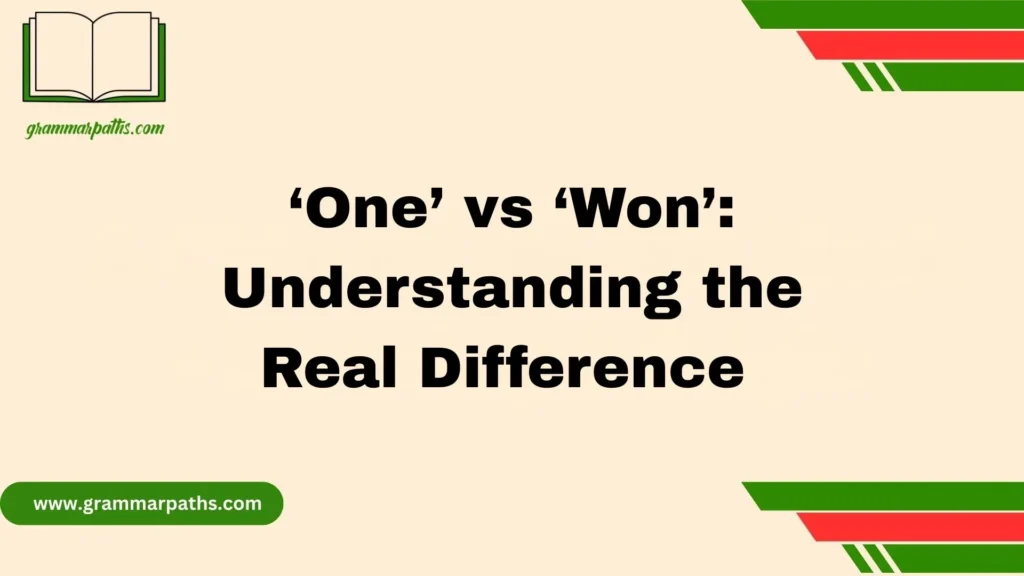Understanding the Accusative Case in Grammar is essential for mastering sentence structure and improving language accuracy. The accusative case—often referred to as the objective case—is used to mark the direct object of a verb, showing who or what receives the action. In English, this is usually indicated by word order, while in languages like German, Latin, or Russian, the accusative is shown through noun endings or inflection.
For example, in the sentence “She loves him,” the word “him” is in the accusative case because it receives the action of the verb “loves.” Understanding this concept helps learners grasp sentence meaning, syntactic roles, and verb-object relationships across different languages.
In grammar studies, distinguishing between the nominative (subject) and accusative (object) cases sharpens comprehension and writing precision. The accusative case also plays a vital role in pronoun usage, prepositional phrases, and sentence construction. By mastering it, students can better interpret complex sentence structures and translate between languages more effectively. In short, the accusative case is a cornerstone of grammatical analysis, connecting verbs and objects to create clear, meaningful expressions.
What Is the Accusative Case? (Definition and Core Meaning)
In grammar, the accusative case identifies the direct object of a sentence — the person or thing that receives the action of the verb.
Think of it like this:
The subject does something → The object receives it.
For example:
- “The teacher praised the student.”
- The teacher = subject (who performs the action)
- praised = verb (the action)
- the student = object (who receives the action — accusative case)
So, in the simplest terms, the accusative marks the receiver of the action.
Here’s the core formula:
| Function | Role in Sentence | Example |
| Nominative | Subject | She loves him. |
| Accusative | Direct Object | She loves him. |
In ancient languages, endings or markers showed this relationship. In English, word order does most of the heavy lifting — but traces of the accusative still survive in our pronouns
The Accusative Case in English Grammar
Unlike Latin or German, English doesn’t have many visible case endings anymore. However, we do still use the accusative case — mostly in pronouns.
Take these examples:
- I → me
- He → him
- She → her
- We → us
- They → them
When these pronouns act as objects, they shift to their accusative form.
| Function | Nominative (Subject) | Accusative (Object) |
| 1st Person Singular | I | me |
| 2nd Person Singular/Plural | you | you |
| 3rd Person Singular (Male) | he | him |
| 3rd Person Singular (Female) | she | her |
| 1st Person Plural | we | us |
| 3rd Person Plural | they | them |
Examples in Sentences
- “He called me.”
- “She helped us.”
- “The kids saw them at the park.”
- “The manager spoke to her.”
Notice how the object (the receiver of the action or preposition) always takes the accusative form.
How to Recognize Accusative Case Pronouns in Sentences
A simple rule: If a pronoun receives the action or follows a preposition, it’s in the accusative case.
Here’s how to spot it:
Common Clues
- The word follows an action verb:
- “He hugged me.”
- “They invited us.”
- The word follows a preposition:
- “The gift is for her.”
- “He sat beside them.”
- It answers the question “Whom?” or “What?” after the verb:
- “She bought a new car.” (What did she buy? → a new car)
Quick Practice
| Sentence | Question | Accusative Word |
| He found the wallet. | What did he find? | wallet |
| She called me. | Whom did she call? | me |
| They saw her at school. | Whom did they see? | her |
The accusative case often hides in plain sight — you just have to know what to look for.
Accusative Case in Other Languages: A Cross-Linguistic Perspective
Many languages still mark the accusative case through endings, particles, or article changes. This makes their grammar more flexible, allowing words to move around without changing the meaning.
Here’s a quick comparison:
| Language | Example | Accusative Marker | English Translation |
| Latin | Puella puerum amat | -um ending | The girl loves the boy |
| German | Ich sehe den Hund | den (article changes) | I see the dog |
| Russian | Я вижу собаку (sobaku) | -у ending | I see the dog |
| Spanish | Veo al niño | “a” personal marker | I see the boy |
Each language has its own way of signaling that a word is in the accusative case.
For example, in German, the definite article changes depending on gender:
- der Mann (the man – nominative)
- den Mann (the man – accusative)
And in Spanish, the small preposition a before a person shows the accusative:
- Veo a María = I see María.
The Accusative Case in Romance Languages: From Latin to Modern Usage
The Romance languages (Spanish, French, Italian, Portuguese, Romanian) all evolved from Latin — and the accusative case left deep traces in each of them.
Latin relied heavily on endings, but as the languages simplified, word order and prepositions replaced those endings.
Latin Example
Puerum videt puella → The girl sees the boy.
Here, puerum (boy) carries the -um ending to show it’s the object.
Modern Examples
| Language | Sentence | Accusative Marker | Meaning |
| Spanish | Veo al niño | “a” before direct object | I see the boy |
| French | Je vois le garçon | article “le” shows gender/number | I see the boy |
| Italian | Vedo il ragazzo | article “il” + position | I see the boy |
Observation
In Romance languages, case endings disappeared, but the function of the accusative — marking the direct object — stayed alive through prepositions and articles.
The German Accusative Case: Articles, Gender, and Change
German grammar still makes strong use of the accusative case. Articles and adjectives change their form depending on gender and case.
| Gender | Nominative | Accusative | Example |
| Masculine | der | den | Ich sehe den Mann. (I see the man) |
| Feminine | die | die | Ich sehe die Frau. (I see the woman) |
| Neuter | das | das | Ich sehe das Kind. (I see the child) |
| Plural | die | die | Ich sehe die Kinder. (I see the children) |
The only article that changes in the accusative is the masculine singular, from der → den.
Tips to Remember
- Masculine nouns change; the rest stay the same.
- Many German verbs require the accusative: sehen (to see), haben (to have), finden (to find).
- Example:
- Ich habe den Schlüssel. → I have the key.
So, learning the accusative case is essential for accurate German grammar and communication.
Accusative Case in Slavic Languages (Russian, Polish, Czech)
Slavic languages — like Russian, Polish, and Czech — take the accusative seriously. Case endings play a major grammatical role.
One unique feature is the animate vs. inanimate distinction, especially for masculine nouns.
| Type | Russian Example | Ending | Translation |
| Animate | Я вижу друга (druga) | -a ending | I see my friend |
| Inanimate | Я вижу стол (stol) | no ending | I see the table |
In Polish, it’s similar:
- Widzę kota (I see the cat – animate, ends with -a)
- Widzę dom (I see the house – inanimate, unchanged)
Why It Matters
Understanding this helps you read and speak with accuracy — since in many Slavic languages, the word order can shift freely. The case endings (like -a or -u) tell you who’s doing what, not the position in the sentence.
The Direct Object and the Accusative Case: The Heart of the Matter
The direct object is the central reason the accusative case exists. Without it, we wouldn’t know who receives the action in a sentence.
To find the direct object, ask:
- Who? or What? after the verb.
Examples
- “The dog chased the ball.” → What did the dog chase? → the ball (accusative)
- “She read the novel.” → What did she read? → the novel
- “They invited us.” → Whom did they invite? → us
Mini Exercise
| Sentence | Question | Accusative Word |
| He washed the car. | What did he wash? | car |
| The team congratulated her. | Whom did they congratulate? | her |
| We watched the movie. | What did we watch? | movie |
Knowing this helps writers avoid common grammatical errors like “between you and I” instead of “between you and me.”
Common Mistakes and Misconceptions About the Accusative Case
Even native English speakers stumble over object forms. Let’s look at the most frequent slip-ups:
| Incorrect | Correct | Why It’s Wrong |
| Between you and I | Between you and me | “Me” is the object of the preposition |
| He loves she | He loves her | “Her” is the object form |
| For they | For them | “Them” is the object pronoun |
| Whom do you think will win? | Who do you think will win? | “Who” is subject of the clause, not object |
Quick Tip
If the word follows a preposition (to, for, between, by, with, about), use the accusative (object) form.
“The gift is for him.”
“The gift is for he.”
These small differences separate polished writing from casual errors.
Why Learning the Accusative Case Improves Writing and Speaking
Grasping the accusative case isn’t just academic — it sharpens real-world communication. Here’s how:
1. Better Sentence Structure
Understanding who acts and who receives the action makes your writing clear and powerful.
2. Improved ESL and Teaching Accuracy
Teachers can explain confusing pronoun choices (like who vs whom) with confidence.
3. Stronger Translation and Editing Skills
Professionals working between languages (English–German, English–Spanish, etc.) can spot errors that software often misses.
4. Polished Communication
In business writing and formal communication, knowing object forms prevents awkward phrasing.
Case Study:
A university writing instructor noticed that her students frequently wrote “between you and I.” After introducing the concept of the accusative case, 87% corrected the error in their next assignment. Understanding why “me” was correct — not just memorizing it — made the knowledge stick.
Conclusion
In summary, the accusative case is one of the most important grammatical tools for identifying the direct object of a sentence. It shows who or what receives the action of a verb, helping to clarify meaning and structure. Whether you’re studying English grammar or exploring inflected languages like Latin, German, or Russian, mastering the accusative case enhances your understanding of sentence construction, pronoun forms, and syntax.
By recognizing patterns and functions of this case, you’ll communicate more accurately and interpret sentences with greater confidence. Simply put, understanding the accusative case makes you a more precise and effective language user.
FAQs
Q1: What is the accusative case in simple terms?
The accusative case marks the direct object of a verb—showing who or what receives the action.
Q2: How can I identify the accusative case in English?
In English, the accusative case is mostly seen in object pronouns like me, him, her, us, and them (e.g., She called him).
Q3: Do all languages use the accusative case?
No. Some languages like English rely on word order, while others like German, Russian, and Latin use specific case endings.
Q4: Why is learning the accusative case important?
It improves your grammar understanding, helps you translate more accurately, and strengthens your writing and speaking clarity.
Q5: How is the accusative case different from the nominative case?
The nominative case marks the subject (who performs the action), while the accusative case marks the object (who receives the action).
Quick Takeaways
- The accusative case identifies direct objects.
- In English, it mainly appears in object pronouns.
- Other languages still show it with endings or markers.
- Mastering it improves clarity, correctness, and confidence in writing and speech.

Grace Marie is the dedicated writer behind GrammarPaths.com, where she shares her passion for English grammar, idioms, and writing mastery. With a strong background in language studies and years of experience helping learners improve their communication skills, Grace creates clear, practical, and engaging content that makes English easy to understand.












